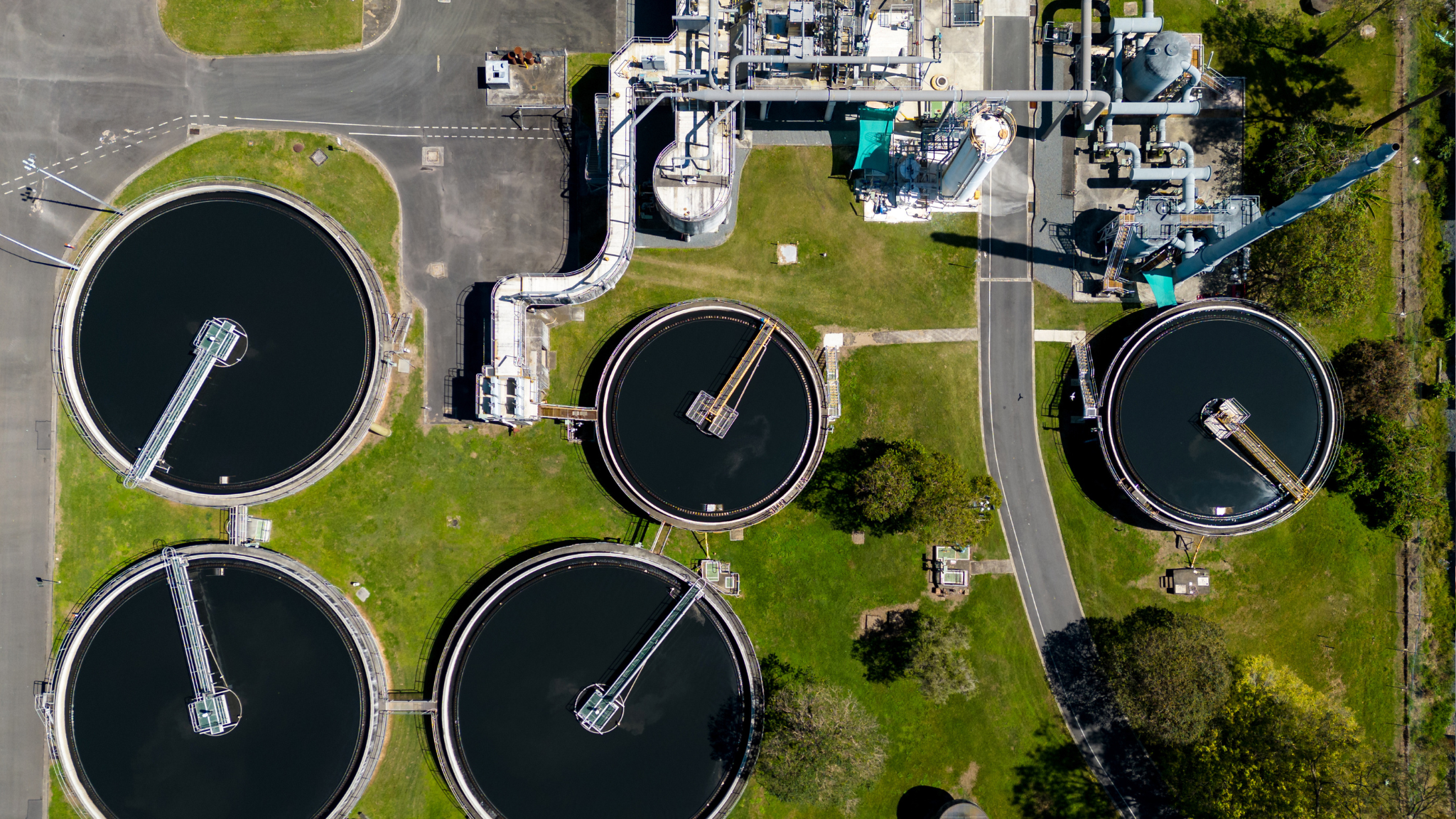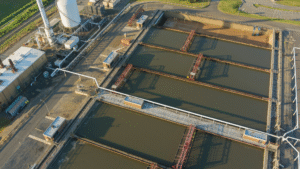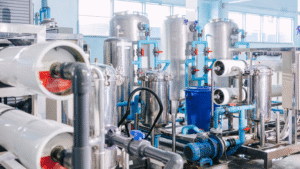The removal of heavy metals from water is a critical aspect of modern wastewater treatment, protecting both human health and the environment. Industrial activities such as mining, metal finishing, and electronics manufacturing discharge toxic heavy metals (including lead, mercury, cadmium, and arsenic) into waterways. These contaminants, even at trace levels, can accumulate in the human body and aquatic ecosystems, causing long-term damage. According to the World Health Organization, exposure to heavy metals is linked to neurological disorders, kidney damage, and developmental issues.
Beyond risks to human health, untreated heavy metals disrupt ecosystems by harming aquatic life and degrading water quality. Many countries have enacted stringent regulations to control heavy metal discharges, compelling industries to implement effective water treatment solutions. Facilities must not only achieve compliance but also minimize their environmental footprint, balancing regulatory needs with operational efficiency.
This article explores how chelating agents play a pivotal role in the removal of heavy metals, compares them to other wastewater treatment methods, and examines how industries can implement these strategies effectively.
Understanding Heavy Metals and Their Behavior in Water
Heavy metals in industrial effluents often appear as dissolved metal ions or bound to particles within an aqueous solution. These metals include lead, cadmium, chromium, copper, and mercury, each with distinct chemical behaviors and environmental impacts. Industrial processes such as electroplating, mining, and chemical manufacturing release various metal ions into water streams.
In water, metal ions may exist freely or attach to organic compounds and inorganic compounds present in the liquid. Their solubility and mobility depend on water pH, temperature, and the presence of surface functional groups that can attract or repel them. Some metals form stable complexes with ligands in the water, making them harder to extract through simple physical separation.
Understanding the chemistry of these heavy metals in aqueous solutions is crucial for selecting the right wastewater treatment methods. The choice of treatment must consider not only the type and concentration of metal ions but also the presence of other contaminants that can interfere with removal efficiency. Proper assessment of water chemistry ensures that the chosen method effectively addresses the specific challenges posed by organic pollutants, inorganic salts, and various metal ions.
Overview of Wastewater Treatment Methods for Heavy Metals Removal
Removing heavy metals from industrial water streams requires specialized wastewater treatment methods that target metal ions effectively while maintaining overall process efficiency. Several approaches are available, each with its own advantages and limitations depending on the water chemistry and initial concentration of contaminants.
One common method is chemical precipitation, which converts dissolved heavy metal ions into insoluble compounds that can be separated from water. This technique is widely used due to its simplicity and cost-effectiveness, although it often requires further treatment to handle sludge.
Membrane technologies, such as reverse osmosis and membrane separation, rely on a semi permeable membrane to filter out toxic heavy metals. These methods provide high removal efficiency, but they are prone to membrane fouling and can involve high energy consumption.
Electrochemical methods, including electrochemical treatment and processes using aluminum electrodes or titanium dioxide, remove metals by applying an electric current. These techniques can offer low energy consumption in some designs and can target specific metal ions.
Other methods include dissolved air flotation, which removes suspended solids and adsorbed metals by attaching them to air bubbles, and thermal treatment, which evaporates water and leaves metals in the residue. Adsorption, using materials like activated carbon, carbon nanotubes, or carbon based adsorbents, attracts metals to the adsorbent surface for removal.
Chelating Agents in Heavy Metals Removal
Chelating agents are organic compounds designed to remove heavy metals from water by forming stable, water-soluble complexes with metal ions. These agents work by surrounding the metal atoms and binding to them through multiple coordination sites, effectively isolating the metal from the aqueous solution. Once bound, the metals are less reactive and can be separated through downstream processes such as filtration, sedimentation, or adsorption.
Common chelating agents include ethylenediaminetetraacetic acid (EDTA), citric acid, and nitrilotriacetic acid (NTA). These compounds are valued for their ability to eliminate heavy metals even at low concentrations, providing high removal efficiency across several heavy metal ions. Chelation is particularly effective in treating wastewater containing metals that are difficult to precipitate, such as lead, zinc, copper, and cadmium.
In industrial applications, chelating agents may be used alongside other chemicals like sodium hydroxide, ferrous sulfate, or sodium dodecyl sulfate to optimize conditions for metal removal. Chelation also helps prevent the re-dissolution of metals after chemical precipitation, stabilizing the treatment process and reducing the need for further treatment.
However, challenges exist. The effectiveness of chelating agents depends on factors such as initial concentration of metals, competing ions, and the presence of interfering surface functional groups. In addition, improper management can lead to persistent metal-chelate complexes that require additional steps for safe disposal.
Comparing Chelating Agents to Other Heavy Metals Removal Methods
Wile chelating agents are highly effective for heavy metals removal, they are just one of many techniques available. Selecting the best method depends on water chemistry, regulatory requirements, and operational goals such as low energy consumption and high removal efficiency.h
Here is how chelating agents compare to other methods:
Ion Exchange Treatment
- Uses ion exchangers or cation exchange membranes to replace metal ions with harmless ions on a resin bed.
- Effective for many metals, but efficiency can drop in the presence of inorganic salts, suspended solids, or organic compounds.
- Chelating agents offer more selectivity for specific metals.
Chemical Precipitation
- Converts dissolved metal ions into insoluble solids for removal.
- Cost-effective for high flow rates and high initial concentration, but less effective for trace or complexed metals.
- Chelating agents are better suited for low concentrations or difficult-to-precipitate metals.
Membrane Technologies
- Includes reverse osmosis, polymer enhanced ultrafiltration, and other membrane technologies.
- Achieves high removal efficiency, but can be prone to membrane fouling and high energy consumption.
- Chelating agents generally have lower energy consumption and maintenance needs.
Electrochemical Treatment
- Uses electrochemical processes, aluminum electrodes, or titanium dioxide to remove metals and sometimes oxidize organic pollutants.
- Can complement chelating agents for stabilized metals before or after treatment.
By understanding the benefits and limitations of each, facilities can design a balanced strategy that maximizes removal capacity, minimizes costs, and protects both the environment and human health.
Applications Across Industries
Chelating agents play a vital role in heavy metals removal across a wide range of industries. Their ability to selectively bind various metal ions and maintain high removal efficiency makes them an excellent choice in settings with complex industrial wastewater or low metal concentrations. Below are examples of industries that benefit from chelation-based treatments:
Mining Industry
- Removes metals from process water and tailings.
- Controls contamination in runoff and supports compliance with environmental standards.
Metal Finishing and Plating
- Targets toxic heavy metals such as nickel, chromium, and cadmium.
- Prevents discharge of metals during surface treatment and coating processes.
Electronics Manufacturing
- Eliminates metals like copper and lead from wash waters and process streams.
- Protects delicate components by maintaining clean aqueous solutions.
Agriculture and Food Processing
- Treats agricultural waste containing metals from fertilizers and pesticides.
- Ensures food safety by reducing contamination risks.
Chemical and Pharmaceutical Industries
- Addresses complex effluents containing organic pollutants, inorganic salts, and several heavy metal ions.
By applying chelating agents, these industries can enhance process efficiency, protect water quality, and meet strict discharge limits. Their flexibility makes them particularly valuable for treating suspended solids, dissolved metals, and challenging contaminants in industrial wastewater streams.
ETI’s Heavy Metals Removal Expertise & Services
ETI provides advanced solutions for the removal of heavy metals, helping industries protect human health, safeguard both the environment, and maintain compliance with strict discharge regulations. Our programs are designed to deliver high removal efficiency, improve process efficiency, and minimize the risks associated with toxic heavy metals in industrial wastewater.
We offer a range of tailored technologies and services to address various metal ions in complex aqueous solutions:
Heavy Metal Precipitation Solutions
- Specialized chemistries that convert dissolved metals into stable, non-leachable solids for removal.
- Optimized for safe disposal and regulatory compliance.
Chelation and Sequestration Strategies
- Prevent metal ions from re-dissolving after initial treatment.
- Stabilize metals under varying pH and water conditions.
Custom-Formulated Coagulants and Flocculants
- Enhance sedimentation and filtration by capturing suspended and dissolved metals.
- Compatible with existing water treatment and further treatment processes.
Our approach begins with water analysis and includes custom formulation development, pilot testing, and ongoing optimization. With ETI’s support, clients achieve reliable removal capacity, reduced liability, and improved sustainability.
To learn more about ETI’s Heavy Metal Precipitation Solutions and Wastewater Treatments, visit our Specialized Treatments pages or contact our technical team directly.
Ready to Improve Your Heavy Metals Removal Strategy?
If you’re looking to enhance your heavy metals removal process with advanced, reliable, and sustainable solutions, ETI is here to help. Our team of water treatment experts can assess your specific needs, recommend the right technologies, and support you from formulation to implementation.
Contact ETI today to get started.
Or visit our Wastewater Treatments and Heavy Metal Precipitation Solutions pages to learn more about how we can help you achieve regulatory compliance and protect both the environment and human health.
Frequently Asked Questions (FAQ)
1. How do chelating agents help remove heavy metal ions from water?
Chelating agents bind to dissolved heavy metal ions in the liquid phase, forming stable complexes that can then be separated from the water through filtration or sedimentation. This process ensures that the metals remain immobilized and do not re-dissolve into the water.
2. Can membrane filtration be used along with chelating agents?
Yes, membrane filtration methods such as reverse osmosis and ultrafiltration are often used alongside chelation. Chelating agents can help prevent scaling and fouling on the membrane surface while improving the overall removal of metals and other contaminants.
3. Why is it important to consider the liquid phase when treating heavy metals?
In water treatment, most metals exist in the liquid phase as dissolved ions. Understanding how metals behave in the liquid phase allows treatment systems to target and capture these ions effectively using chemical, physical, or combined methods.
4. How do heavy metals impact chemical oxygen demand (COD) in wastewater?
Although heavy metals themselves do not directly contribute to chemical oxygen demand, they can interfere with biological treatment processes that reduce COD. High levels of metals may inhibit microbial activity, making it harder to lower COD levels in wastewater.
5. Are advanced oxidation processes effective for heavy metals removal?
Advanced oxidation processes are more commonly used to degrade organic pollutants rather than remove metals. However, they can complement heavy metal treatment by breaking down organic matter that might otherwise interfere with metal removal processes.





